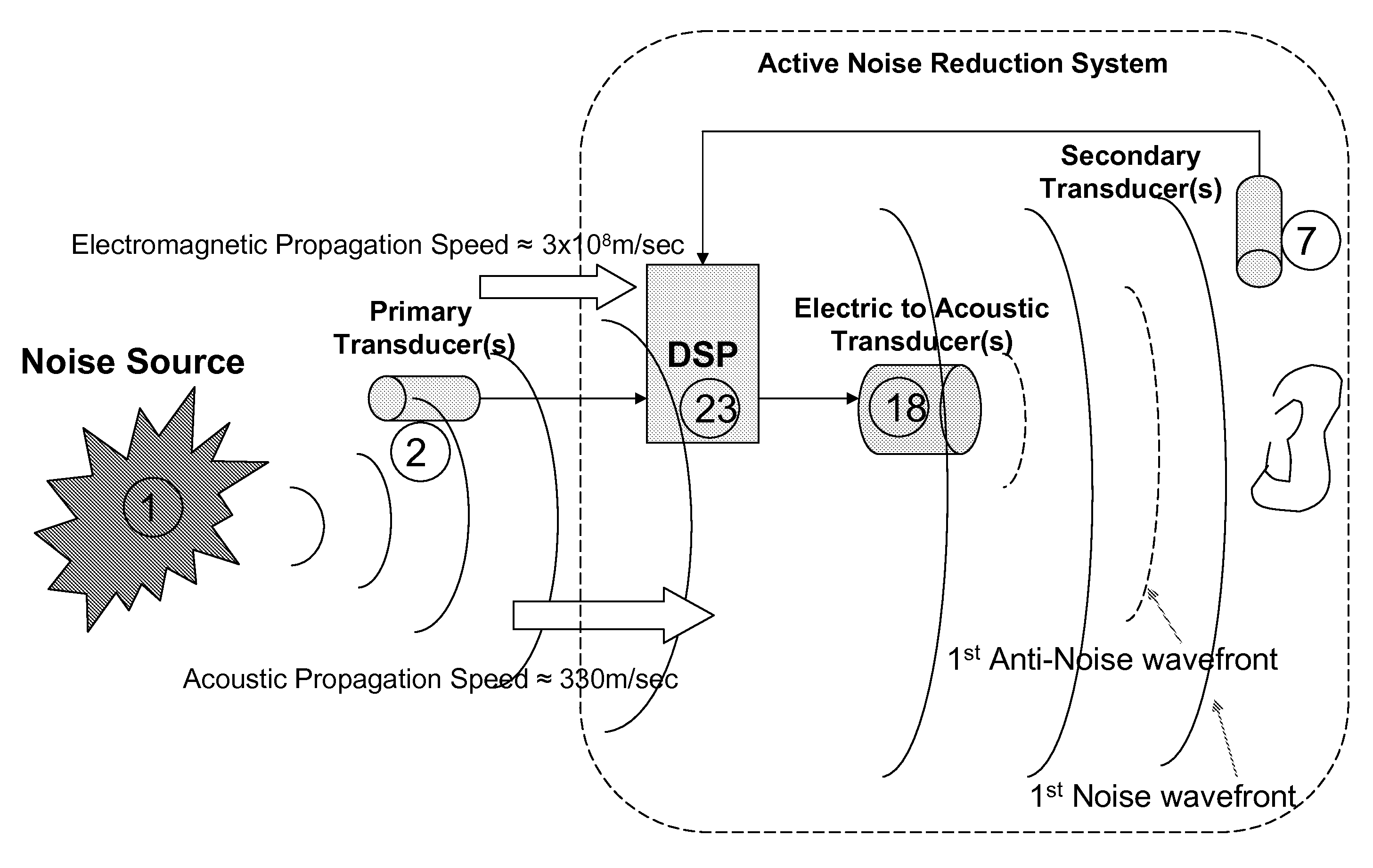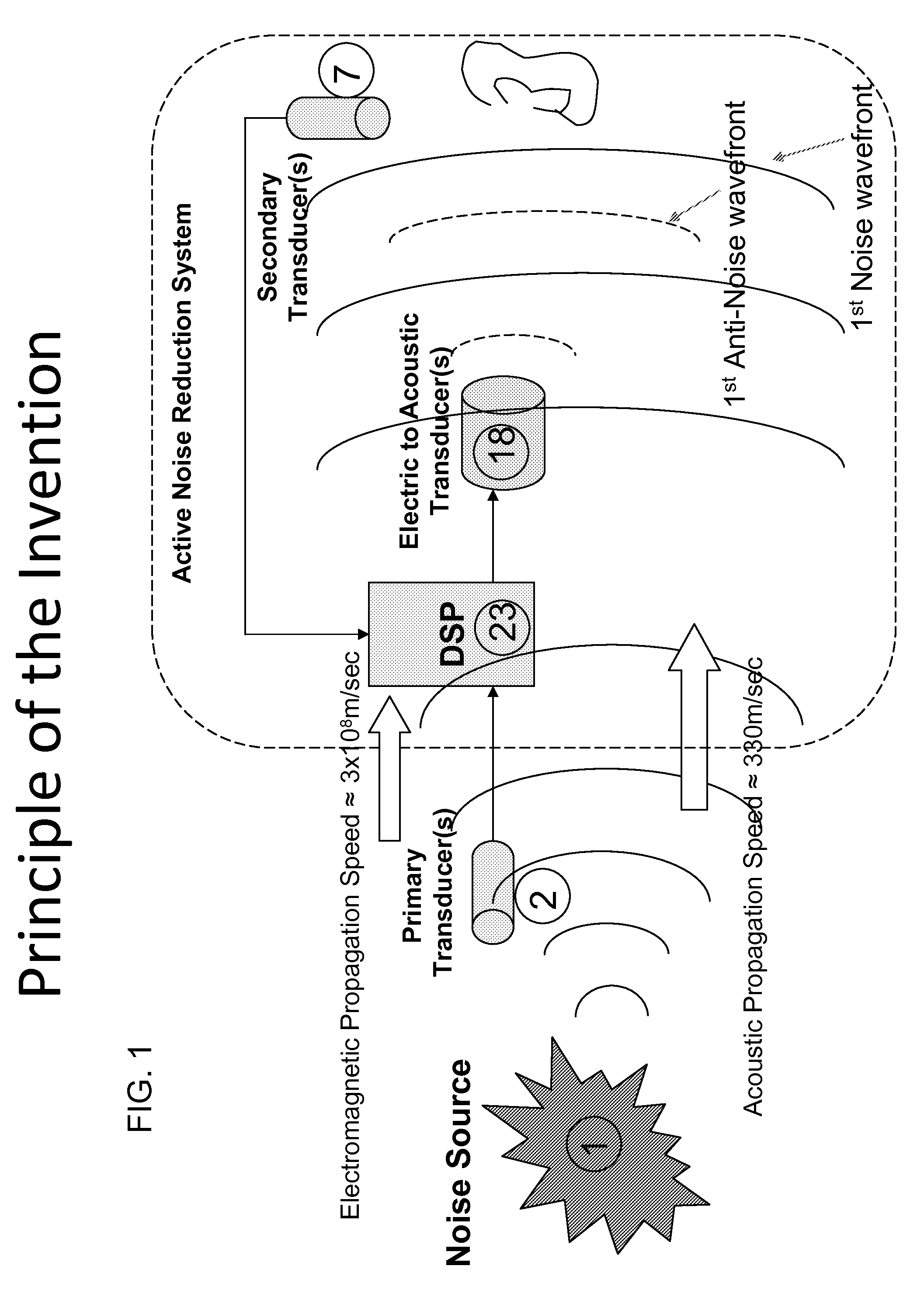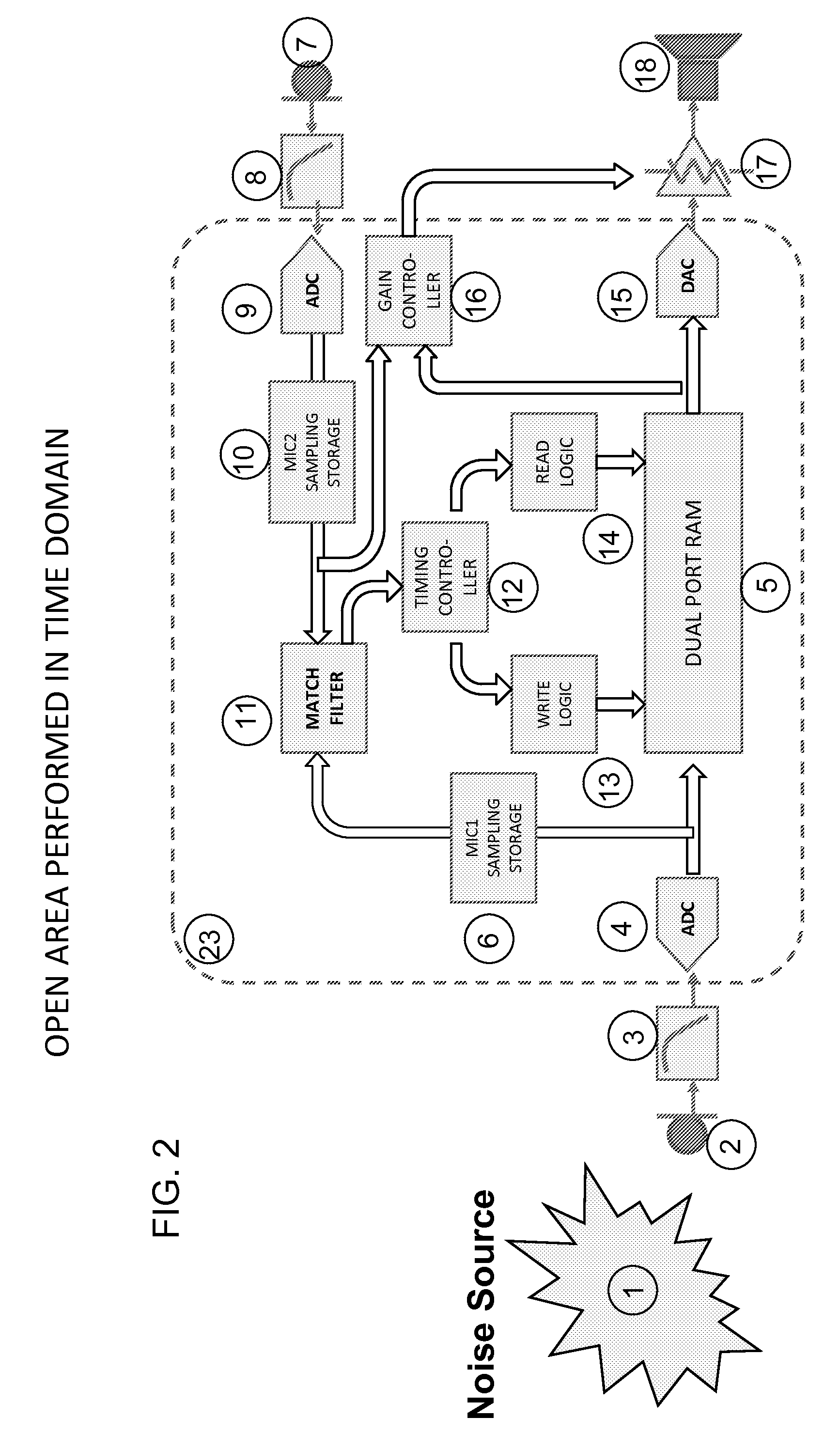Active acoustic noise reduction technique
- Summary
- Abstract
- Description
- Claims
- Application Information
AI Technical Summary
Benefits of technology
Problems solved by technology
Method used
Image
Examples
Embodiment Construction
[0018]Some embodiments of the present invention are described in detail with reference to the related drawings of FIGS. 1 through 5. Additional embodiments, features and / or advantages of the invention will become apparent from the ensuing description or may be learned by practicing the invention.
[0019]FIG. 1 generally shows one embodiment of the active noise reduction system. A noise source 1 at the beginning of the diagram is sensed by the primary transducer 2, which then feeds the sampled noise through either wired or wireless means into a digital signal processor (DSP) within the main system. The DSP 23 then feeds into an electric to acoustic transducer 18. The acoustic propagation speed of the noise is approximately 340 m / sec while the electromagnetic propagation speed of the noise is approximately 3×10̂8 m / sec. The system takes advantage of the received electrical noise signal a delta time ahead of the arrival acoustic noise, thus generating a process to cancel the noise with o...
PUM
 Login to View More
Login to View More Abstract
Description
Claims
Application Information
 Login to View More
Login to View More - R&D
- Intellectual Property
- Life Sciences
- Materials
- Tech Scout
- Unparalleled Data Quality
- Higher Quality Content
- 60% Fewer Hallucinations
Browse by: Latest US Patents, China's latest patents, Technical Efficacy Thesaurus, Application Domain, Technology Topic, Popular Technical Reports.
© 2025 PatSnap. All rights reserved.Legal|Privacy policy|Modern Slavery Act Transparency Statement|Sitemap|About US| Contact US: help@patsnap.com



